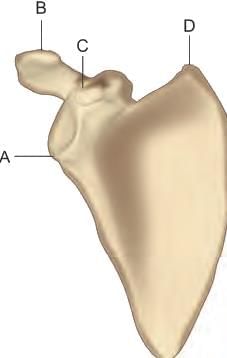NEET PG Exam > NEET PG Tests > Test: Upper Limb - NEET PG MCQ
Test: Upper Limb - NEET PG MCQ
Test Description
25 Questions MCQ Test - Test: Upper Limb
Test: Upper Limb for NEET PG 2025 is part of NEET PG preparation. The Test: Upper Limb questions and answers have been prepared
according to the NEET PG exam syllabus.The Test: Upper Limb MCQs are made for NEET PG 2025 Exam.
Find important definitions, questions, notes, meanings, examples, exercises, MCQs and online tests for Test: Upper Limb below.
Solutions of Test: Upper Limb questions in English are available as part of our course for NEET PG & Test: Upper Limb solutions in
Hindi for NEET PG course.
Download more important topics, notes, lectures and mock test series for NEET PG Exam by signing up for free. Attempt Test: Upper Limb | 25 questions in 25 minutes | Mock test for NEET PG preparation | Free important questions MCQ to study for NEET PG Exam | Download free PDF with solutions
Detailed Solution for Test: Upper Limb - Question 1
Test: Upper Limb - Question 2
Which of the marked structures is palpable in the infraclavicular fossa?


Detailed Solution for Test: Upper Limb - Question 2
Detailed Solution for Test: Upper Limb - Question 3
Test: Upper Limb - Question 4
The following muscles are attached to the coracoid process of the scapula EXCEPT:
Detailed Solution for Test: Upper Limb - Question 4
*Multiple options can be correct
Detailed Solution for Test: Upper Limb - Question 5
Detailed Solution for Test: Upper Limb - Question 6
Detailed Solution for Test: Upper Limb - Question 7
*Multiple options can be correct
Detailed Solution for Test: Upper Limb - Question 8
Detailed Solution for Test: Upper Limb - Question 9
Detailed Solution for Test: Upper Limb - Question 10
*Multiple options can be correct
Detailed Solution for Test: Upper Limb - Question 11
Test: Upper Limb - Question 12
All the pairs about bony attachments around shoulder joint are correctly matched EXCEPT:
Detailed Solution for Test: Upper Limb - Question 12
Detailed Solution for Test: Upper Limb - Question 13
*Multiple options can be correct
Detailed Solution for Test: Upper Limb - Question 14
*Multiple options can be correct
Detailed Solution for Test: Upper Limb - Question 15
*Multiple options can be correct
Detailed Solution for Test: Upper Limb - Question 16
Detailed Solution for Test: Upper Limb - Question 17
Test: Upper Limb - Question 18
Weight transmission from upper limb to axial skeleton is done by all EXCEPT:
Detailed Solution for Test: Upper Limb - Question 18
*Multiple options can be correct
Test: Upper Limb - Question 19
Which among the following is a branch from the trunk of brachial plexus?
Detailed Solution for Test: Upper Limb - Question 19
Test: Upper Limb - Question 20
Which of the following nerves carries fibres from all the roots of brachial plexus?
Detailed Solution for Test: Upper Limb - Question 20
Detailed Solution for Test: Upper Limb - Question 21
Detailed Solution for Test: Upper Limb - Question 22
*Multiple options can be correct
Detailed Solution for Test: Upper Limb - Question 23
Detailed Solution for Test: Upper Limb - Question 24
Detailed Solution for Test: Upper Limb - Question 25
Information about Test: Upper Limb Page
In this test you can find the Exam questions for Test: Upper Limb solved & explained in the simplest way possible.
Besides giving Questions and answers for Test: Upper Limb, EduRev gives you an ample number of Online tests for practice
Download as PDF














